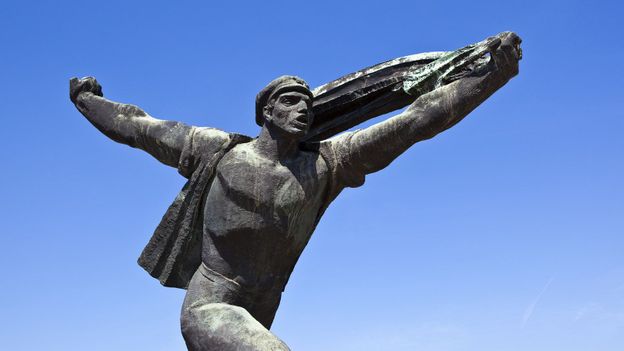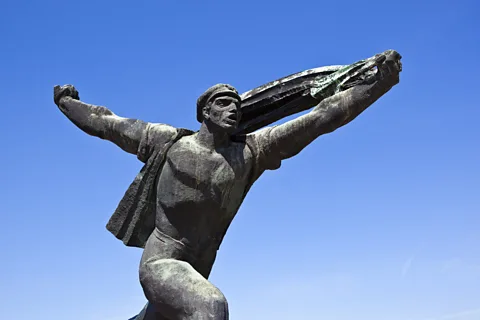
Ghosts of Budapest’s past
[ad_1]

Testament to Hungary’s resilience is how the country pays remembrance to the effects of WWII and communism.
The 20th Century has not been kind to Hungary. When the post-WWI Treaty of Trianon partitioned the nation into a much smaller territory, WWII air and ground fights left Hungary in a battered state. Then there was communism.
Testament to Hungary’s
resilience is how the country has rebuilt and paid remembrance to the past
century of tumult with several poignant attractions.
After the fall of communism
in 1989, most Socialist monuments from around Eastern Europe were torn down.
Other countries destroyed their collections of imposing icons in the catharsis of
revolution, but Hungary’s Soviet legacy was left abandoned in dusty warehouses.
Now, more than 20 years later, 42 statues, busts and plaques that celebrated
what Hungarians call the Soviet Occupation are a fascinating Budapest tourist
attraction.
At the gates of Memento
Park, a huge statue of Lenin greets visitors. Inside is a jumbled history
of the last half of the 20th Century. Post-WWII images of Lenin, Marx and Engels
lie adjacent to stylised works from the 1970s. There are also numerous
crumbling monuments of Béla Kun, leader of the Hungarian Revolution who later
ran afoul of Stalin before his eventual rehabilitation as communist icon.
Top buys at the bleakly ironic
souvenir shop include T-shirts with the sensible motto, “Never buy anything
with a handle… it means work”, and cans of air filled with the “last breath of
socialism”. Darkly ironic music fans can groove to dance mix CD’s of the “Best
of Communist Revolutionary Songs”, or light up Lenin and Stalin candles to
illuminate the dying embers of revolution.
Back in downtown Budapest,
the 20th-century tragedy is masked by stylish cafes and Art Nouveau
apartments. Number 60 Andrassy
Ut was the headquarters of the secret police of the Fascist Arrow Cross
party in the dying days of WWII, and from 1945 to 1956 the building was used
for similar purposes by the equally repressive Communists. After falling into
disrepair, it re-opened in 2002 as the Terror
Haza (House of Terror) a powerful memorial to the thousands who experienced
torture in subterranean cells under two different totalitarian regimes.
The entrance is
spectacular, with a Soviet tank surrounded by hundreds of photographs of
victims. The exhibitions dealing with the Fascist and Communist regimes are
grim and chilling. Photographs are black and white, and colours are stark and
monochromatic, illuminating the swastika-like arrow cross of the Fascists and
the red star of the Communists. A plush red curtain opens suddenly to
illuminate the luxurious red velvet interior of a Communist Party limousine.
Specially-commissioned
music and soundscapes envelop visitors, but despite the hi-tech gimmickry,
personal details make the experience emotional and affecting. A single room is
a shrine to the global Hungarian diaspora after the Soviet crackdown in 1956.
Postcards from successful refugees in Los Angeles, Sydney, Canada and New
Zealand are a display of resilience. A recording of Dean Martin croons “Memories
are made of this” in the background. It could be kitsch, but is actually
very touching.
The last two rooms
alleviate the Terror Haza’s earlier melancholic gloom, and hope explodes with
video clips showing the festive release of the events of 1989. In a new
century, it is a colourful and welcome segue outside to a Budapest summer’s day.
[ad_2]
Source link





